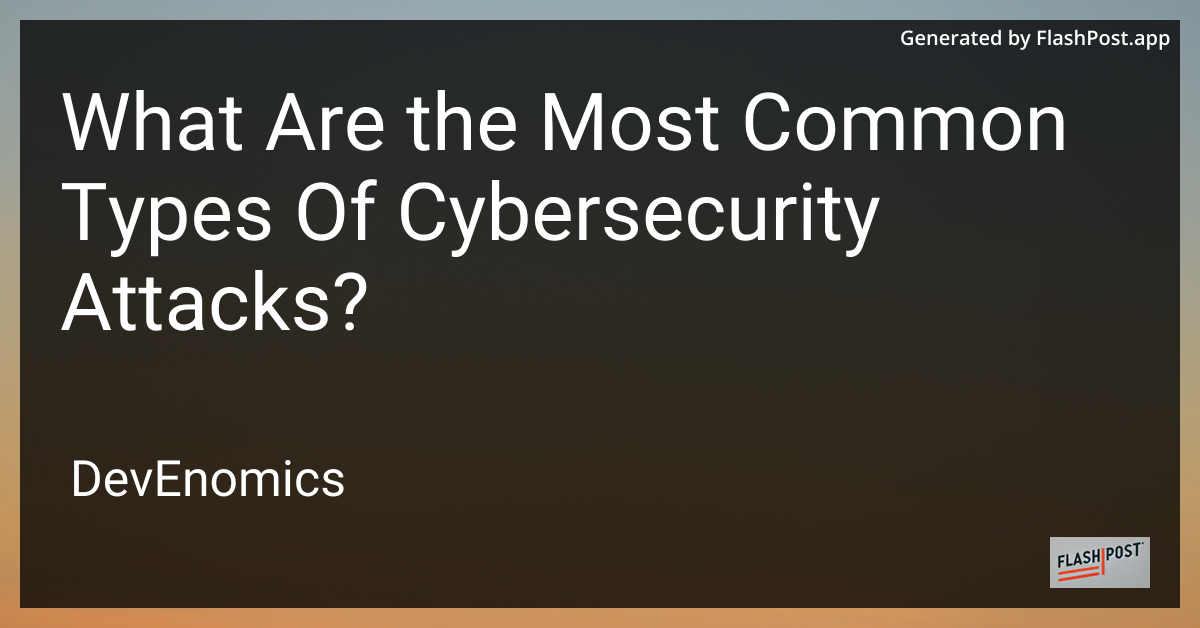

What Are the Most Common Types Of Cybersecurity Attacks?
In today’s digitally connected world, cybersecurity attacks pose a significant threat to individuals and organizations alike. Understanding the most common types of cybersecurity attacks is crucial for developing effective defense strategies. In this article, we will explore these attacks to help you recognize and prevent them.
1. Phishing Attacks
Phishing attacks are one of the most prevalent cybersecurity threats. Attackers trick victims into revealing sensitive information by masquerading as trustworthy entities through emails or messages. Phishing can lead to data breaches, identity theft, or financial loss.
Prevention Tips:
- Always verify the sender’s email address before clicking on any links.
- Be cautious of emails asking for sensitive information.
- Use email filtering to detect and block phishing attempts.
2. Malware
Malware, shorthand for malicious software, includes viruses, worms, ransomware, and spyware. It is designed to disrupt, damage, or gain unauthorized access to a computer system.
Prevention Tips:
- Install reputable antivirus software and keep it updated.
- Avoid downloading files or software from untrusted sources.
- Regularly back up data to secure locations.
3. Ransomware
Ransomware is a type of malware that encrypts the victim’s files, demanding payment for the decryption key. It can paralyze businesses by denying access to critical data and systems.
Prevention Tips:
- Regularly update all software to patch security vulnerabilities.
- Implement robust data backup and recovery plans.
- Train employees to recognize phishing emails.
4. Man-in-the-Middle (MITM) Attacks
In MITM attacks, the attacker secretly intercepts and relays messages between two parties who believe they are directly communicating with each other. This allows the attacker to steal sensitive information or alter communications.
Prevention Tips:
- Use strong, unique passwords and enable two-factor authentication.
- Avoid using public Wi-Fi networks for sensitive transactions.
- Use VPNs to encrypt communications.
5. Denial of Service (DoS) Attack
A DoS attack aims to shut down a machine or network, making it inaccessible to its intended users by overwhelming the system with a flood of traffic.
Prevention Tips:
- Implement network security measures like firewalls and intrusion detection systems.
- Rate-limit requests to critical systems.
- Regularly conduct network audits and stress tests.
Further Reading and Career Resources
For those looking to advance their career in cybersecurity or pivot into this field, explore the following resources:
- Job Application Tips for Cybersecurity Analyst Position.
- Changing Careers to Cybersecurity.
- Cybersecurity Analyst Interview Preparation.
Staying informed and vigilant is the key to protecting against cybersecurity threats. By understanding these common types of attacks, you can fortify your defenses and mitigate potential risks.
This article consists of detailed sections about common cybersecurity threats, which are structured to be SEO-friendly by using keywords and phrases relevant to the topic. Additionally, it includes links to external resources for further career-related information or application tips, which can help enhance the article's authority and usefulness.